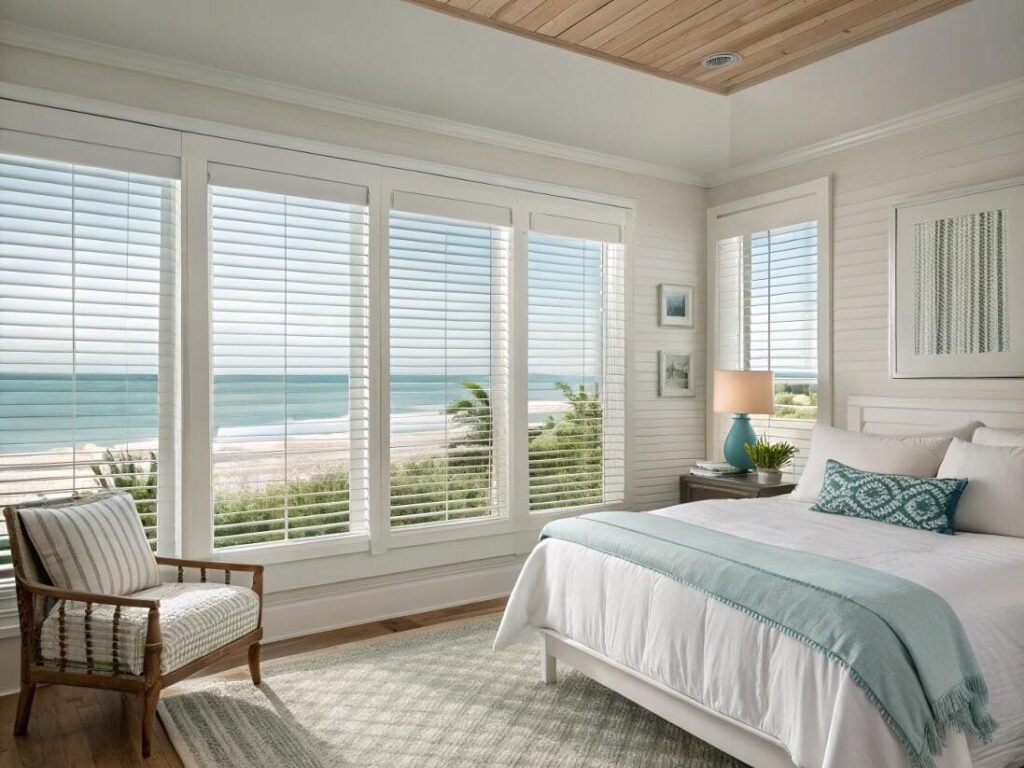You're specifying blinds for a big project and need to choose between aluminum and plastic. A wrong choice can lead to warping, breakage, and costly callbacks that damage your bottom line.
The main difference is durability versus versatility. Aluminum Venetian blinds offer superior longevity and stability in heat, while plastic (PVC or vinyl) blinds[^1] provide better moisture resistance[^2] and wider custom color options[^3].
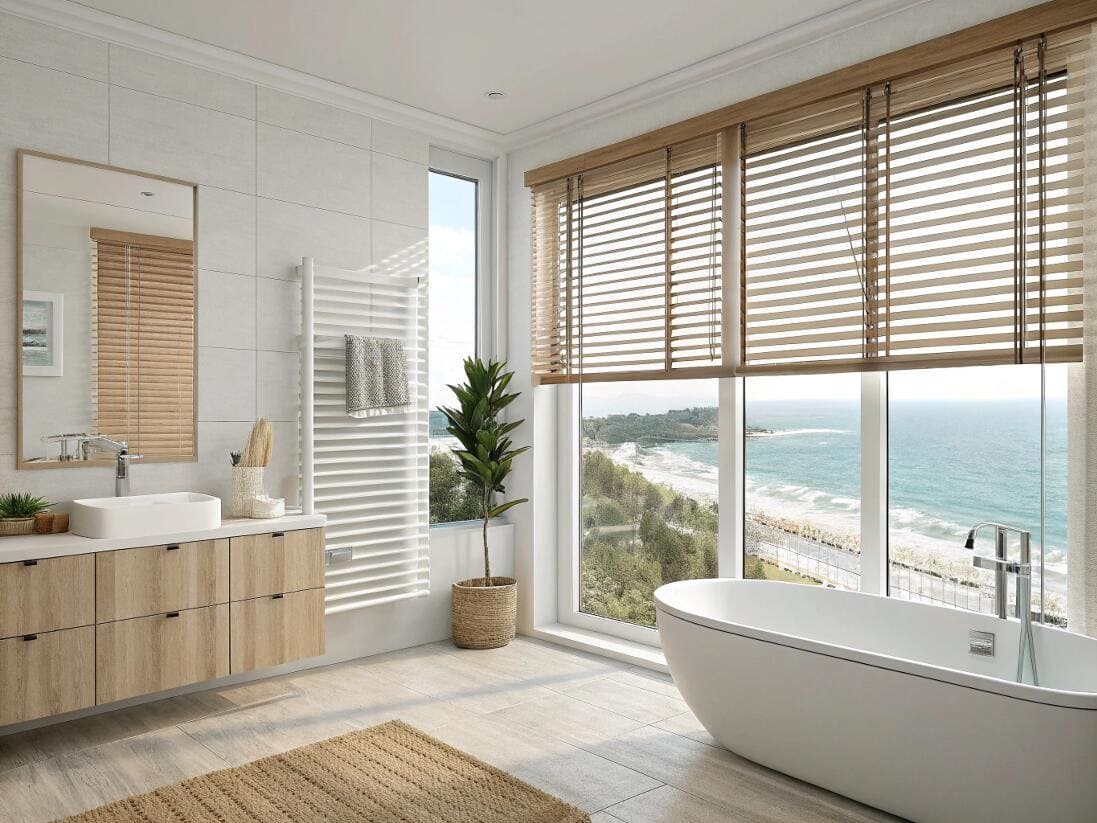
Choosing the right material is one of the most common challenges I discuss with my partners. Emma, a project manager for commercial interiors, recently faced this exact problem. She was working on a mixed-use development[^4] with office spaces and residential units in a coastal city. She needed a solution that could handle both intense sun exposure and high humidity. It’s not just about what looks good on day one; it's about what performs for the next ten to fifteen years. To make the right call, you need to look beyond the price tag and understand the core differences in performance, durability, and lifetime cost.
Which blinds are truly better, aluminum or vinyl?
You see aluminum and vinyl blinds offered at different price points. You need to know which one offers the best performance and value for your specific project, not just which one is cheaper.
Aluminum blinds are better for durability and heat resistance, making them ideal for commercial spaces[^5] and sunny windows. Vinyl (PVC) blinds are better for high-humidity areas[^6] like bathrooms and offer more color flexibility.
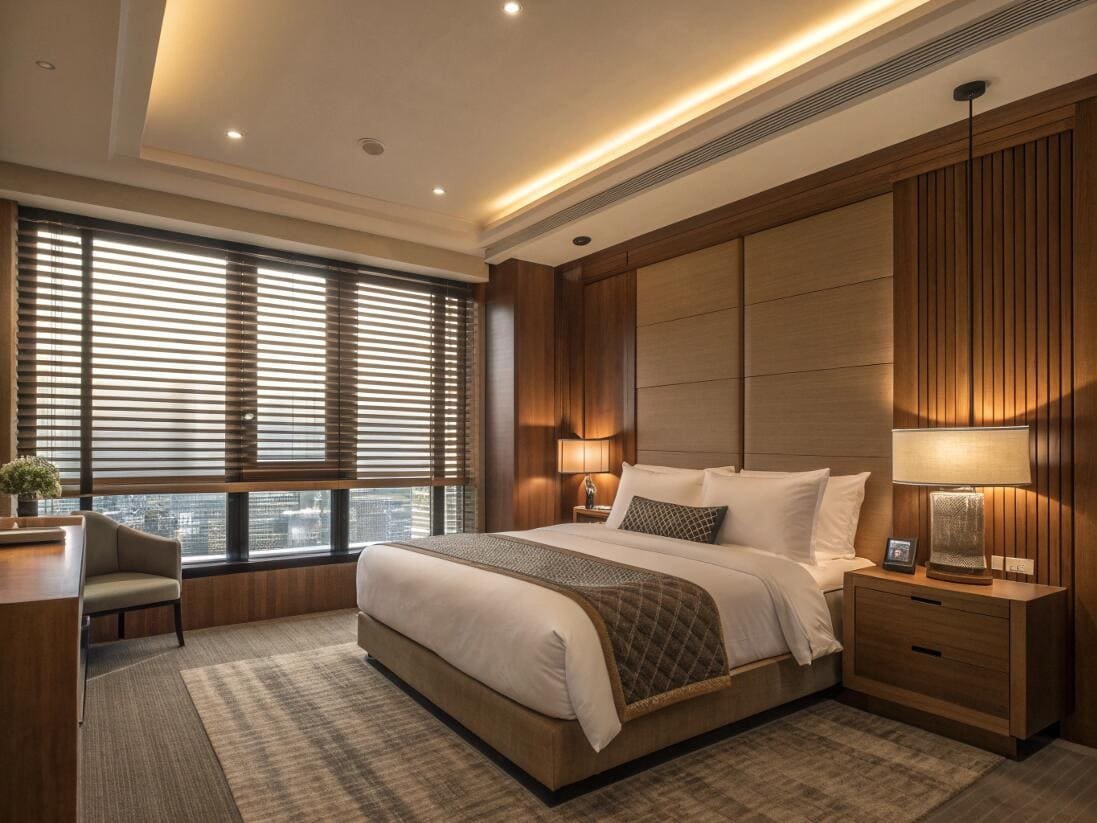
There is no single "best" material, only the best material for a specific application. The choice comes down to a trade-off between structural integrity and environmental resistance[^7]. Aluminum is a metal, so it's inherently stronger and more stable. It can handle wind pressure from an open window and the vibrations in a busy office without issue. Its major advantage is thermal stability[^8]; it will not warp or become brittle even under years of direct, intense sunlight.
Vinyl or PVC blinds are a type of plastic. Their key advantage is that they are completely waterproof, making them the perfect choice for kitchens, bathrooms, or coastal homes where salt air and humidity would corrode metal. PVC is also easier to customize for color. However, its weak point is temperature extremes. In very hot conditions, low-quality PVC can soften and warp. In sudden cold snaps, it can become brittle. Understanding this core difference is the first step to specifying the right product.
What makes one blind more durable than the other?
You've seen vinyl blinds turn yellow and brittle or aluminum blinds bend easily. You need to know the specific quality benchmarks that separate a durable product from one that will fail prematurely.
Durability comes from material thickness and quality processing. For aluminum, look for a 0.21mm slat gauge with a "three-coat, two-bake" finish. For vinyl, the key is high-density PVC[^9] that resists warping.
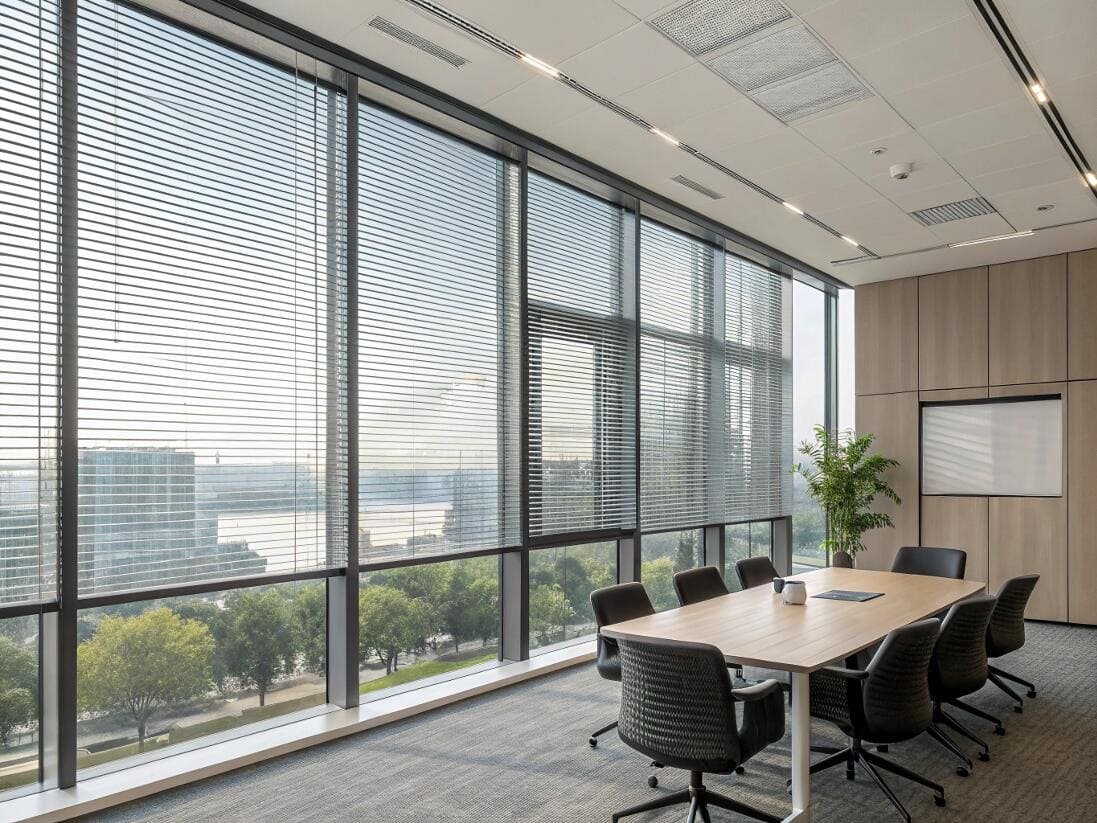
When I audit a factory, I focus on the technical details that define durability. With aluminum, it starts with the slat thickness[^10]. I insist on a gauge of 0.21mm. This provides the right balance of flexibility and strength, preventing the slats from getting permanent creases during everyday use. Just as important is the paint process. A "three-coat, two-bake" finish ensures the color is deeply bonded to the metal and can withstand 500 hours in a salt spray test without corroding. This is what gives a quality aluminum blind a lifespan of 15 years or more.
For plastic blinds, the lifespan is directly tied to the quality of the PVC itself. Low-density PVC contains more fillers and is much more likely to warp or sag under its own weight in a hot window. High-quality, virgin PVC has much better structural integrity. A simple test is to hold a slat horizontally; a low-quality one will sag noticeably. While a well-made PVC blind can last many years, it generally has a shorter lifespan than a high-quality aluminum one, typically around 7-10 years before showing signs of age.
How do upfront costs compare to long-term value?
You're comparing quotes, and the aluminum option is more expensive. It's tempting to choose the cheaper vinyl blind to save money on the initial purchase, but you worry about the hidden costs later.
Aluminum blinds cost about 30-60% more upfront than PVC. However, because they last nearly twice as long, their lifetime ownership cost is actually 18-22% lower than PVC, making them a smarter long-term investment.
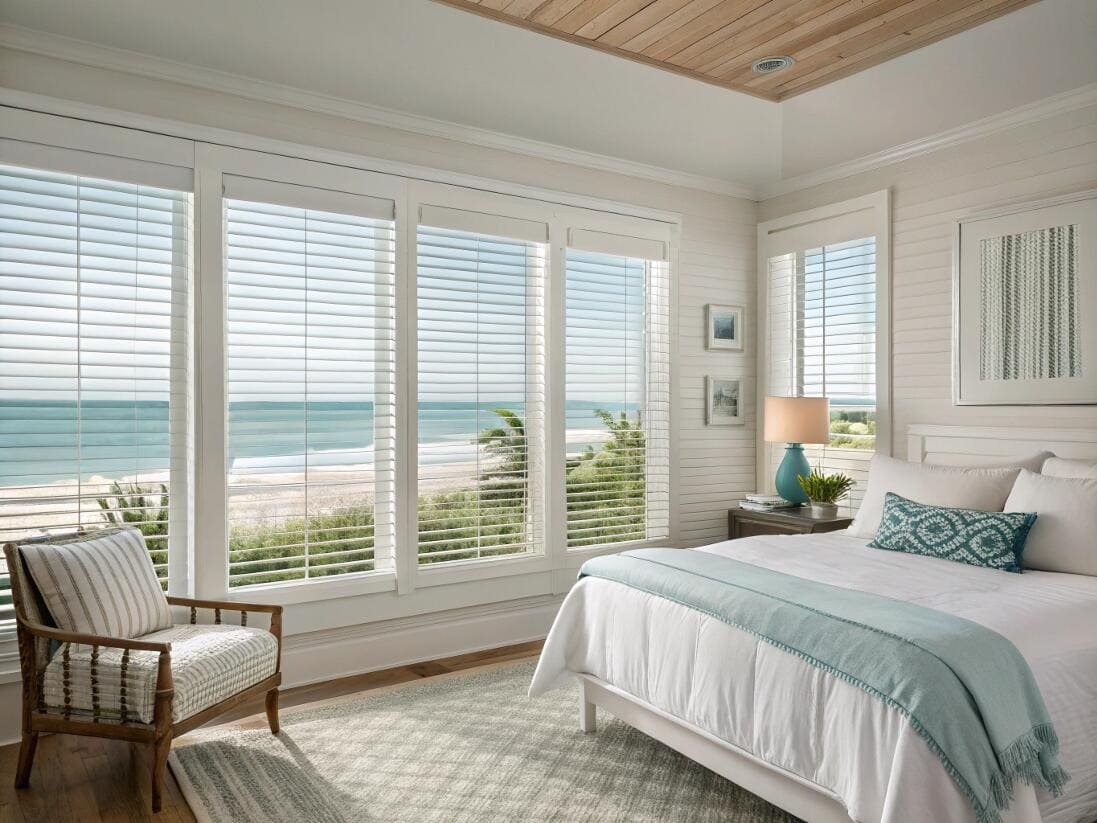
Project buyers are always focused on the budget, and rightly so. On paper, PVC looks like the more economical choice. If a PVC blind costs $30, a comparable aluminum blind might be $45. For a project with hundreds of windows, that difference adds up quickly. But I always encourage my partners to think about the Total Cost of Ownership (TCO)[^11]. A high-quality aluminum blind has a reliable service life of 15 years or more. A PVC blind, even a good one, will likely need replacement within 7 to 10 years due to potential discoloration or warping.
When you factor in the cost of the replacement product plus the labor to install it, the PVC blind ends up being the more expensive option over that 15-year period. The slightly higher initial investment in aluminum buys you peace of mind and ultimately saves your client money, protecting you from future complaints and replacement hassles.
| Feature | Aluminum Blinds | PVC/Vinyl Blinds |
|---|---|---|
| Upfront Cost | Higher (1.3x - 1.6x) | Lower |
| Avg. Lifespan | 15+ years | 7-10 years |
| Lifetime Cost | Lower (by 18-22%) | Higher |
| Best Value For | Long-term commercial projects | Budget-sensitive or temporary use |
What are the options for color and finish?
Your client wants a specific look. They might need a custom color to match a brand identity or a unique texture to complement an interior design scheme.
PVC offers excellent color matching[^12] through integral pigments, perfect for specific brand colors or wood-grain looks. Aluminum provides more sophisticated textures like brushed metal, matte, and micro-sand finishes through powder coating.
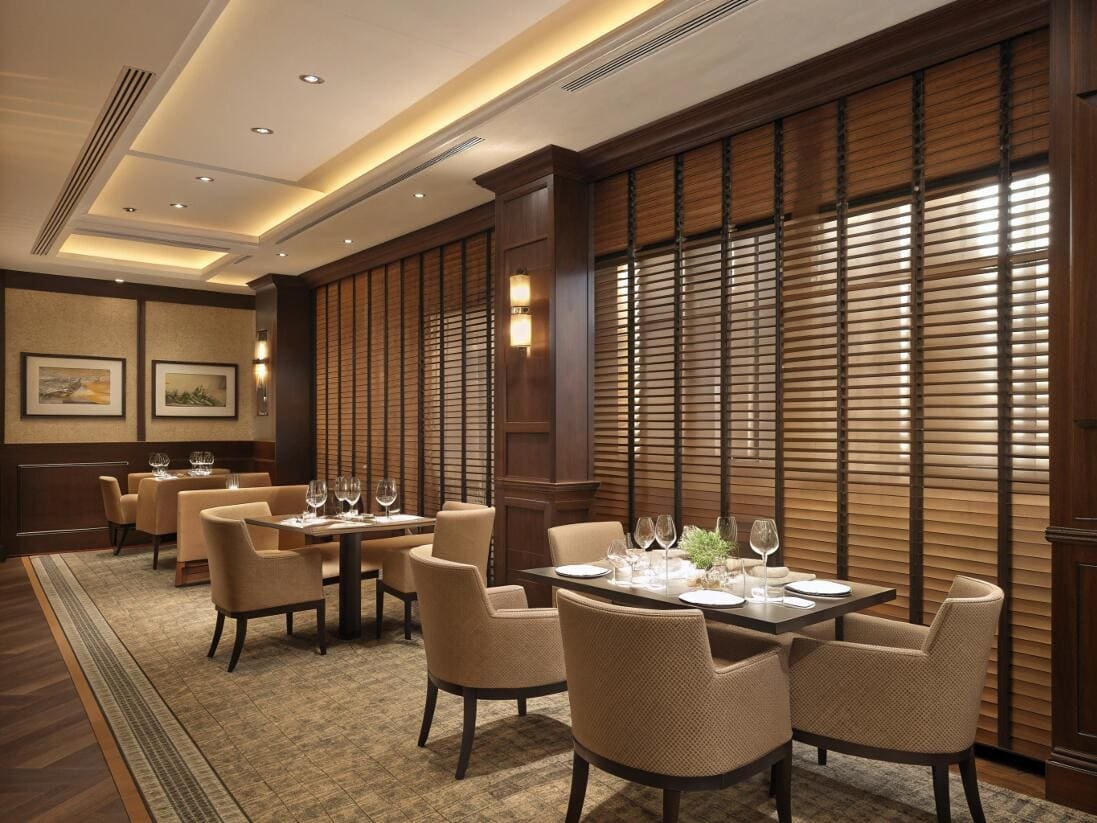
This is where the manufacturing process creates very different aesthetic possibilities. Plastic blinds are colored using "integral pigment" or "masterbatch." This means the color is mixed directly into the molten PVC before it is extruded into the slat shape. This process is excellent for creating solid, consistent colors, including high-gloss or matte finishes. We can match any Pantone color, which is a huge benefit for commercial clients who need to align with specific brand guidelines.
Aluminum blinds are colored after the slat is formed using a powder-coating process. While the standard color range is often more focused, this method allows for a much wider variety of textures. We can create finishes that mimic brushed steel, subtle micro-sand textures that don't show fingerprints, and sophisticated matte finishes that absorb light beautifully. The choice depends on the design intent: Do you need a specific, solid color (PVC) or a unique, tactile finish (aluminum)?
Where should you use aluminum versus plastic blinds?
You understand the technical differences, but now you need to apply that knowledge to real-world projects. You need to confidently recommend the right material for different environments to ensure performance and client satisfaction.
Use PVC blinds in high-humidity areas like bathrooms, kitchens, and coastal properties. Use aluminum blinds for large commercial projects, south-facing windows with intense sun, and any application where long-term durability is the top priority.
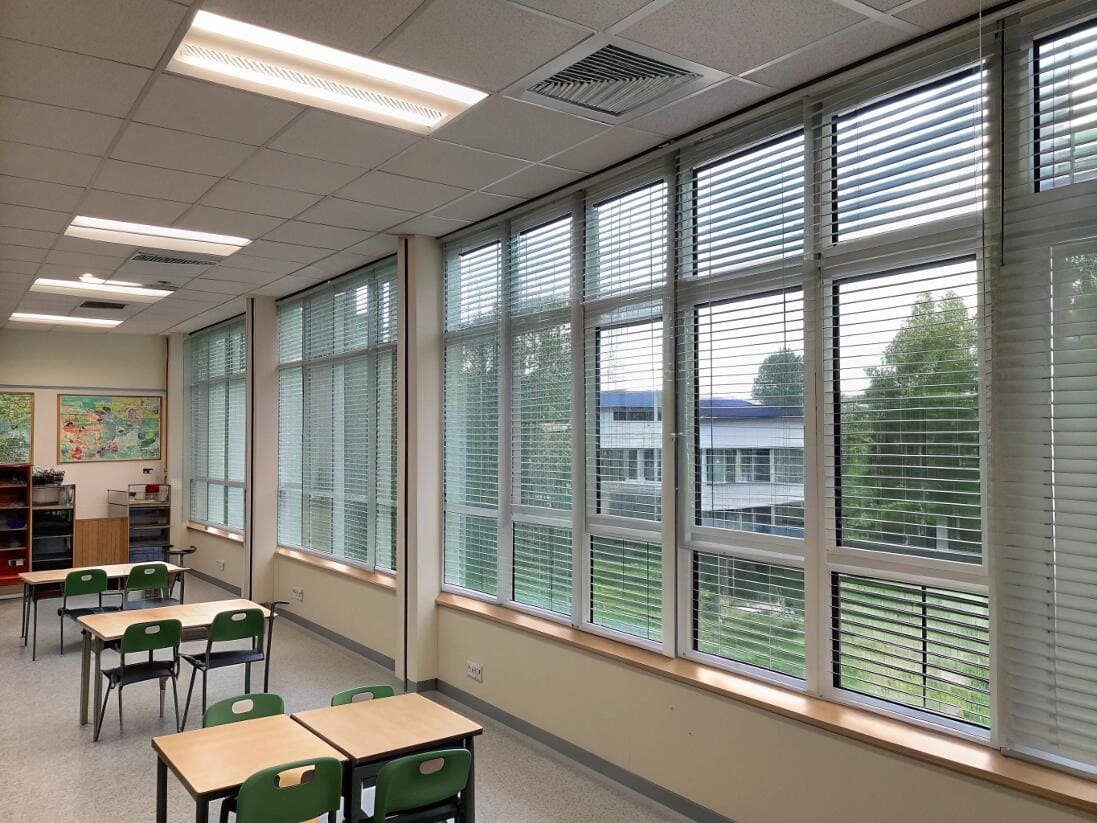
Matching the material to the environment is the key to a successful project. I use a simple decision tree with my partners to make this clear. If the primary challenge is moisture, the answer is always PVC. Its waterproof nature means it will never rust, corrode, or be damaged by humidity. It is the default choice for any hospitality project with bathrooms or in coastal homes.
If the primary challenge is intense sun, high heat, or the need for maximum durability, the answer is always aluminum. In a corporate office, school, or hospital, blinds are operated frequently and need to withstand years of use. Aluminum’s stability under heat prevents the warping you might see with PVC in a window that gets direct sun all day. Its rigidity also allows for wider blinds without needing extra support, making it perfect for the large windows common in commercial architecture. Specifying the right material for the right scenario is the mark of a true professional.
Conclusion
Choosing between aluminum and plastic isn't about which is cheaper, but which is smarter. By aalyzing durability, lifetime cost, and the specific project environment, you can select the material that delivers lasting value.
---
[^1]: Learn about the moisture resistance and color options of PVC or vinyl blinds.
[^2]: Understand why moisture resistance is crucial for blinds in humid environments.
[^3]: Discover how custom color options can enhance your interior design.
[^4]: Gain insights into the complexities of managing mixed-use development projects.
[^5]: Learn about the ideal blinds for commercial spaces that require durability.
[^6]: Find out which blinds are best suited for high-humidity environments like bathrooms.
[^7]: Understand how environmental resistance affects the choice of blinds.
[^8]: Learn how thermal stability impacts the performance of blinds in extreme conditions.
[^9]: Discover the advantages of high-density PVC in ensuring blind durability.
[^10]: Find out why slat thickness is a key factor in the durability of blinds.
[^11]: Explore how TCO can influence your decisions on home improvement investments.
[^12]: Understand the process of color matching in PVC blinds for brand alignment.Partner with VelaBlinds for Your Next Project
Smart window treatments shouldn't be complicated. After working with 500+ distributors and contractors worldwide, I've streamlined the process to get you quality products, competitive pricing, and reliable support - every time.
Why project professionals choose VelaBlinds:
- ✅ Fast, Accurate Quotes - Detailed specs and pricing within 24 hours
- ✅ Transparent Pricing - No hidden fees, volume discounts clearly outlined
- ✅ Quality Assurance - Direct partnerships with certified OEM manufacturers
- ✅ Project Support - Dedicated account manager from quote to delivery
Start your next project:
📧 Quick Quote: Send your requirements to info@velablinds.com
📱 Direct Contact: WhatsApp +86 137 2012 8317
🌐 Browse Solutions: https://velablinds.com/
📁 Product Resources: Access spec sheets, catalogs & project files
Paul Chen, Founder
"I built VelaBlinds to solve the real challenges I faced as a project buyer - long lead times, unclear specs, and unreliable suppliers. Let's discuss how we can power your projects with smarter blinds."
Serving distributors and contractors across North America, Europe, and Australia since 2018.

